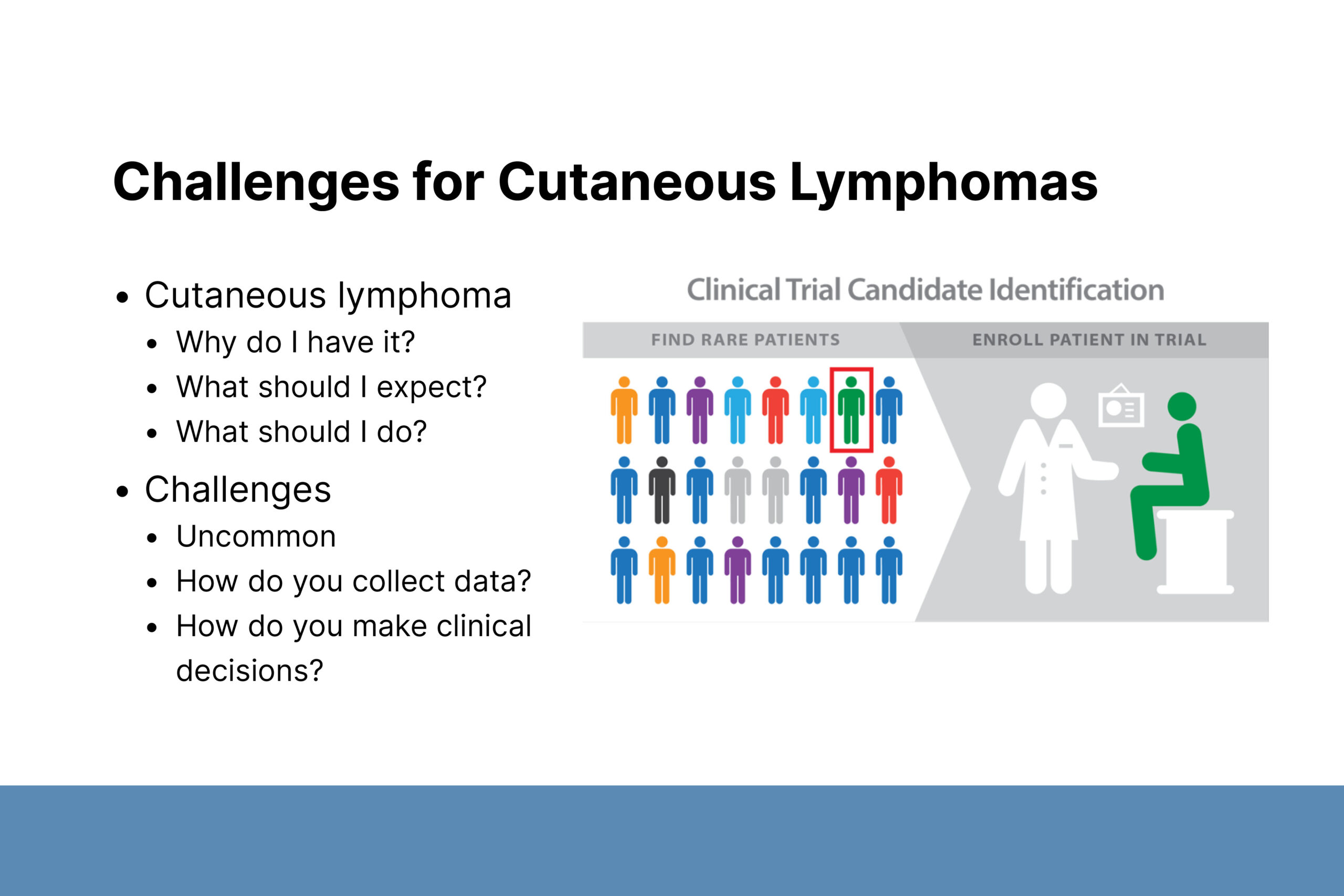Precision Medicine in Cutaneous Lymphoma
Dr. Jaehyuk Choi’s approach to precision medicine in cutaneous lymphoma is to better understand their disease and drivers of therapeutic resistance. Machine learning algorithms help identify predictive biomarkers and can develop innovative next-generation therapies.
Dr. Jaehyuk Choi, PhD, Jack W. Graffin Professor, Associate Professor of Dermatology, and Biochemistry and Molecular Genetics, Northwestern University
October 2024
Dr. Jaehyuk Choi presented two patient cases that demonstrate his approach to precision medicine in cutaneous lymphoma. Patients are referred to Dr. Choi from multiple institutions to better understand their disease and drivers of therapeutic resistance. He uses machine learning algorithms to identify predictive biomarkers and develop innovative next-generation therapies.
Case #1
A 64-year-old male diagnosed with Stage 1 mycosis fungoides (MF) in 2001 was told the disease was nonfatal and to expect slow progression. In 2010, he developed oral lesions and was diagnosed with lymphoma. Subsequently, he presented with fever, malaise, and abdominal pain and was diagnosed with primary cutaneous gamma delta T cell lymphoma (PCGDTL). Dr. Choi noted that limited knowledge of the disease in 2001 prevented the medical team from warning the patient about his possible disease course.
PCGDTL is clinically heterogenous with good and poor outcomes. Dr. Choi leveraged machine learning to identify PCGDTL subtypes based on the skin layer of origin as epidermal, dermal, and panniculitic. Further analysis showed these subtypes are derived from distinct cells of origin with unique behaviors that are retained by the lymphomas. Epidermal and dermal lymphomas are derived from gamma delta (γδ) 1 T cells; panniculitic lymphomas are derived from γδ2 T cells. Non-cytotoxic γδ1 tumors can progress slowly; cytotoxic γδ1 tumors become aggressive and may metastasize to the intestinal epithelium. γδ2-driven tumors are always aggressive and more inflammatory and can lead to cytokine-driven hemophagocytic lymphohistiocytosis, a life-threatening bone marrow disease.
γδ MF patients can do well, but 30% develop metastatic lesions, a unique property of epidermal γδ1 lymphomas. Dr. Choi noted that patients with γδ MF should be warned about possible disease outcomes.
Case #2
A female patient with sezary syndrome (SS) appeared to have a good prognosis. Suddenly, her sezary cell (cancerous T cell) count increased 400% in one month and she died. Dr. Choi used her story to better understand what happened and to improve future outcomes.
Dr. Choi gathered SS patient samples and conducted assays to measure sezary cell growth. He found two groups of patients: about 80% with indolent disease and about 20% with aggressive disease. Further analysis showed that these groups differed only in the presence of programmed cell death protein 1 (PD1) gene mutations. PD1 mediates T cell exhaustion. PD1 is highly expressed in indolent lymphomas, preventing worsening disease despite high sezary cell counts, with a median survival of 10 years. In 20% of patients, downregulated PD1 mutations prevent T cell exhaustion, leading to uninhibited growth and more aggressive disease with a median survival of less than two years.

 Register today for the 2025 Clinical Symposium.
Register today for the 2025 Clinical Symposium.

